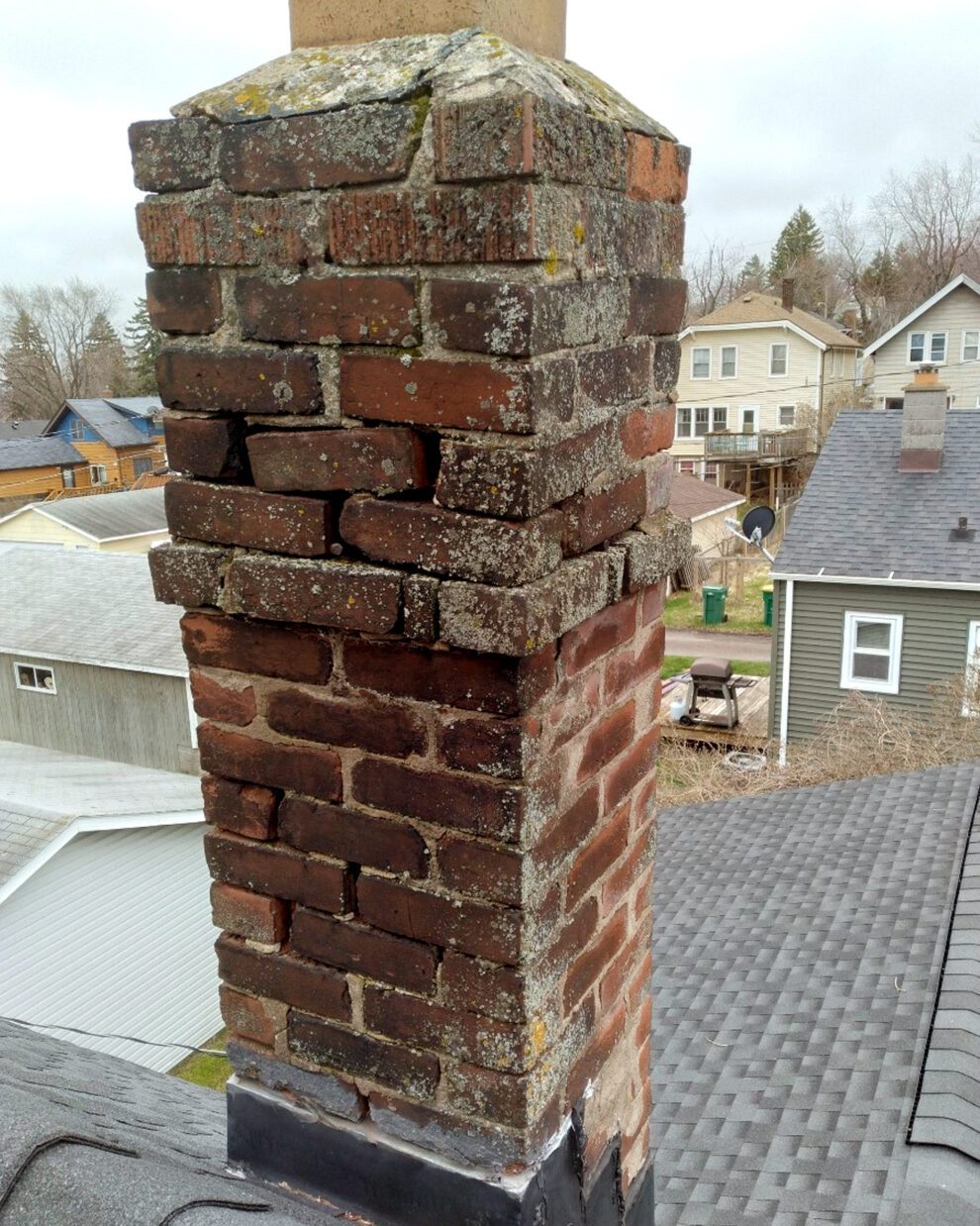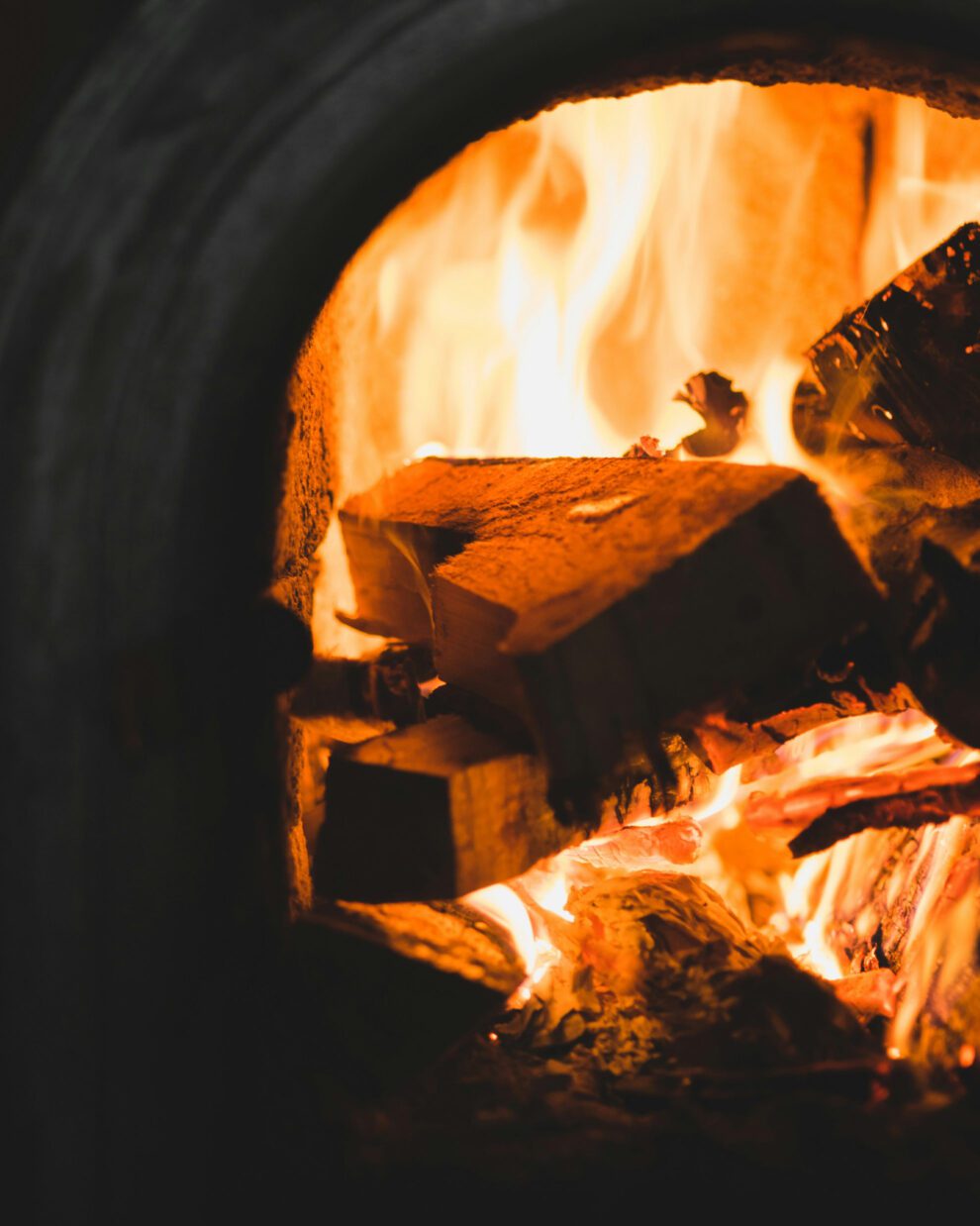
Bricks or pieces of brick laying on the ground or on your roof near your chimney likely means that there are issues with your chimney that should be addressed.
The Chimney Crown vs. Chimney Cap
Sometimes the chimney crown is incorrectly referred to as a chimney cap. We will try to differentiate the two here. Both parts, if installed and constructed properly, work together to keep moisture from entering the chimney.
Chimney Crown
The chimney crown is a piece of concrete that sits on top of the chimney and covers the brick. The Chimney Flue Liner passes through the Chimney Crown. These are either formed and poured in place, or precast and installed on the top of the chimney.
Chimney Cap
The Chimney cap is usually constructed of Stainless Steel, Steel, or aluminum and its purpose is to protect the flue liner from rain, animals, birds, or debris from entering your fireplace or chimney.
Issues with the Chimney Crown
- Some common issues with the chimney crown include cracks, porous concrete, and insufficient overhangs. The concrete chimney crown should be solid, in one continuous piece and have a minimum of 1.5” overhangs all the way around the chimney.
- Cracks in the chimney crown will allow moisture to enter the chimney.
- Porous concrete will allow moisture seep into the chimney crown and enter the chimney.
- If the sides of the chimney crown are flush to the face brick on the chimney, water can run directly off the crown and down the faces of the brick, which can cause premature deterioration of the face brick and mortar joints.
- Some chimneys don’t even have a chimney crown, just a thin layer of mortar that can easily allow large amounts of moisture into the chimney.
- In any of the above scenarios when moisture sits inside of the brick or masonry chimney, the freeze and thaw cycles can cause the bricks to deteriorate or spall. Spalling is the term that refers to the bricks flaking apart.
- If the crown is porous or has small cracks, it can be repaired with caulking and Crown Seal.
- If the crown is in too poor of a condition, it should be replaced.
Issues with the Chimney Cap
If the chimney cap or rain cap is missing, this allows a direct path for rainwater to enter the chimney flue, which can cause the flue to deteriorate. If you don’t have a cap on your chimney flue, one should be installed to help prevent these issues.
Flue Deterioration/Spalling
If the flue liners are not in sufficient condition, or if there are cracks, spalling, etc. then this could allow flue gas from your furnace, boiler, fireplace, wood stove, etc. to enter into the masonry portion of the chimney. Flue gas also contains moisture and if this moisture enters the masonry or brick chimney this can also cause the brick to spall during the freeze thaw cycles. When the flues deteriorate, this is also a safety concern, as creosote (for wood burning applications) can build up in other parts of the chimney causing a potential for a chimney fire.
These are a few reasons why you might see pieces of your chimney or bricks laying on the roof or ground near the chimney. If you suspect chimney problems, you should call a Chimney Safety of America Certified Chimney Sweep to complete a thorough inspection of your chimney.
Small Chimney cracks or minor brick spalling indicates there is an underlying issue with your chimney, and you should address it sooner rather than later, as small issues will eventually turn into big and more costly problems with your chimney. Often before a chimney gets in too rough of shape, small repairs can be done such as tuckpointing missing mortar joints, brick replacement and crown seal or crown repair.
Eventually, if not taken care of, will result in having to have the entire chimney removed and rebuilt.
